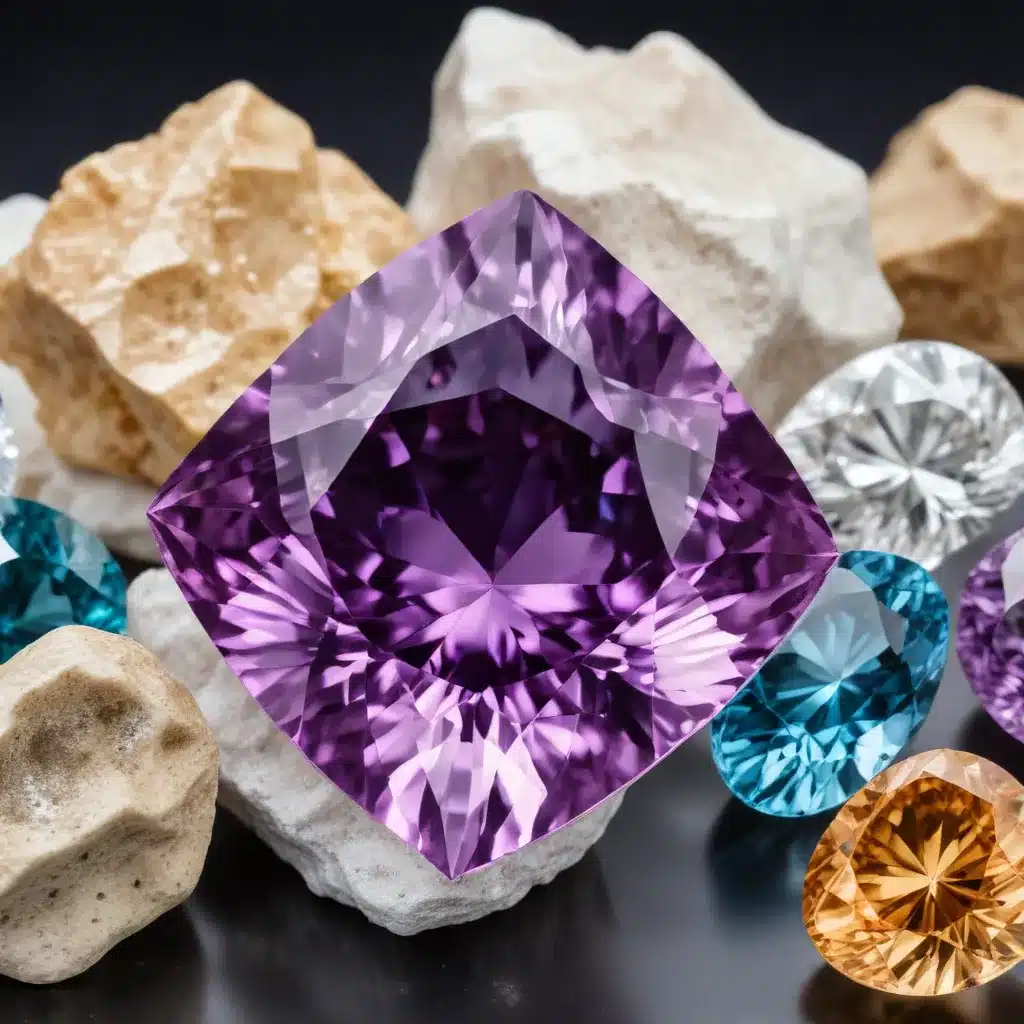
As a gem and jewelry expert, I’m thrilled to share insights on how to properly care for your lab-grown gemstones. Synthetic gems, such as moissanite and cubic zirconia, have revolutionized the jewelry industry, offering ethically sourced and affordable alternatives to natural stones without sacrificing their brilliance and beauty. However, like their earth-mined counterparts, these lab-created gems require diligent maintenance to preserve their stunning visual appeal over time.
Understanding Lab-Grown Stones
Synthetic gems are created in controlled laboratory environments, replicating the natural processes that form gemstones deep within the Earth’s crust. Using advanced technologies like chemical vapor deposition (CVD) or high-pressure, high-temperature (HPHT) methods, scientists can now produce diamonds, rubies, sapphires, and a host of other precious stones with near-identical chemical, optical, and physical properties to their natural counterparts.
The key difference lies in the formation timeline. While natural diamonds can take millions of years to develop, lab-grown varieties are cultivated in a matter of weeks or months. This accelerated growth process results in a purity and consistency unattainable in mined gems, making synthetic stones an increasingly popular choice for those seeking ethically sourced and budget-friendly jewelry options.
When it comes to moissanite vs. cubic zirconia, these two lab-grown gems exhibit distinct characteristics that set them apart. Moissanite, discovered in a meteor crater, shares diamond’s trademark brilliance and fire, but boasts a higher refractive index and dispersion for an even more captivating sparkle. Cubic zirconia, on the other hand, offers a dazzling appearance at a fraction of the cost, though its Mohs hardness is lower than that of diamonds or moissanite, making it more susceptible to scratches and chips over time.
Proper Cleaning and Care Techniques
Maintaining the pristine condition of your lab-grown gems requires a few simple steps. Begin with a gentle cleaning routine, using a soft-bristled brush, mild soap, and warm water. Soak the jewelry for 10-15 minutes to loosen any accumulated dirt or oils, then gently scrub the surface, taking care to reach all the nooks and crannies. Rinse thoroughly to remove any soap residue, which can dull the stone’s luster, and dry with a soft, lint-free cloth.
Avoid using harsh chemicals, abrasives, or ultrasonic cleaners at home, as these can potentially damage the delicate structure of synthetic gems or their settings. Steer clear of toothpaste as well, as its gritty texture can scratch the surface over time. When cleaning, always work over a sink with a closed drain to prevent the devastating loss of a precious stone.
For a more comprehensive deep clean, consider taking your lab-grown jewelry to a professional jeweler every six months or so. Skilled craftspeople have access to specialized equipment, like ultrasonic cleaners and steam cleaners, that can safely remove even the most stubborn buildup without compromising the integrity of your gems or their settings.
Enhancing Brilliance and Luster
The cutting and polishing processes are crucial in unlocking the full visual potential of lab-grown stones. Gem cutters meticulously analyze the raw material, carefully shaping and proportioning each facet to maximize the stone’s ability to reflect and refract light. This precise craftsmanship is what endows synthetic gems with their unparalleled brilliance, fire, and scintillation.
To maintain this captivating appearance, periodic polishing and buffing can help restore the luster of your lab-created gems. Gently rub the surface with a soft cloth, using a small amount of jeweler’s rouge or polishing compound specifically formulated for synthetic stones. This gentle abrasive action helps remove any microscopic scratches or cloudiness that may have developed over time, effectively “renewing” the gem’s optical properties.
Identifying Synthetic Gem Types
While lab-grown diamonds, rubies, and sapphires are chemically and physically indistinguishable from their natural counterparts, other synthetic varieties, such as cubic zirconia or strontium titanate, exhibit unique identifying characteristics. Trained gemologists can often spot subtle differences in refractive index, dispersion, and double refraction that differentiate these lab-created gems from their mined counterparts.
Many synthetic stones also bear laser inscriptions or other identifying markings on their girdles, providing additional proof of their origin. Reputable jewelers will always be transparent about the nature of the gems they sell, ensuring customers are fully informed about the products they’re purchasing.
Protecting Your Investment in Synthetic Gems
When it comes to evaluating the quality of lab-grown gems, the same criteria used for natural stones apply. Cut quality, color grade, and clarity all play a crucial role in determining the overall brilliance and value of a synthetic gem. Ensure that your jewelry is certified by a respected gemological laboratory, such as the Gemological Institute of America (GIA) or the International Gemological Institute (IGI), to guarantee its authenticity and pedigree.
Regular maintenance is key to preserving the longevity and visual appeal of your lab-created treasures. Routine inspections by a professional jeweler can identify any loose settings, worn prongs, or other issues that could compromise the security of your gems. Addressing these concerns promptly can prevent the heartbreaking loss of a precious stone.
When it comes to storage, a soft, fabric-lined jewelry box with individual compartments is ideal for protecting lab-grown gems from accidental scratches or impacts. Avoid exposing your jewelry to harsh chemicals, extreme temperatures, or direct sunlight, as these environmental factors can potentially discolor or weaken the setting over time.
By following these simple yet effective care and maintenance strategies, you can ensure that your lab-grown gems continue to captivate and dazzle for generations to come. Whether you’re shopping for birthstone jewelry, a sparkling engagement ring, or a timeless tennis bracelet, synthetic stones from brands like Shelby Gem Factory offer an ethically sourced, budget-friendly, and environmentally conscious alternative to natural gems without sacrificing quality or brilliance.

